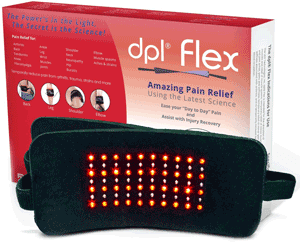Do you use the terms “sunscreen” and “sunblock” interchangeably? Well, it turns out that these are not actually the same exact thing. There are some noteworthy differences between sunblock and sunscreen, and they are worth knowing about. After all, by being more informed about these types of products, which are designed to help protect your skin against the sun’s harsh and damaging UV rays, you can make smarter buying decisions that will be great for your skin.
So, what are the similarities and differences between sunscreen and sunblock? Check out the info below to learn more, and to gain greater insight into the best ways to protect your skin and take steps to reduce your risk of skin cancer.
Table of Contents
First Off, Why Should You Use Sunscreen or Sunblock?
Sunscreen and sunblock are both used to help safeguard your skin when you’re out in the sunshine. The best way to gauge how much protection these products provide is by looking at the SPF, as well as by looking for terms like “broad-spectrum protection” on the label. Experts recommend starting with an SPF that is at least 30, but you can find options that are much higher than that if you prefer them.
Sunblock tends to be the better option for individuals who have skin conditions or who have sensitive skin. That’s because, while sunblock tends to not contain chemical ingredients, sunscreen does often contain chemical ingredients that may end up causing reactions like irritation.
What do sunblock products use to protect you? Well, these products contain ingredients that will sit on your skin, rather than be absorbed into your skin like sunscreen would. That’s why they’re referred to as physical sunscreens, or mineral sunscreens.
Bottom line: The sun’s harsh UVA and UVB rays can harm your skin, but by simply applying either of these types of products before heading out—and then reapplying them, as needed while you’re outside—you can take a smart step towards preventing damage.
Sunblock vs. Sunscreen: Differences in Ingredients
We already mentioned that sunblocks and sunscreens work a little differently because of the way that they remain on your skin. Here’s a bit more information regarding the ingredients that are usually found in these products.
With sunscreens, you’ll typically find chemical filters, such as oxybenzone, octinoxate, avobenzone, and octisalate. These will work on absorbing the sun’s rays to keep them from affecting your skin.
On the other hand, with sunblock, you’ll usually find mineral ingredients, such as zinc oxide and titanium dioxide. These work like a reflective shield by physically blocking the sun’s UV rays.
Side note: These days, you can also find products that contain a combination of chemical ingredients and mineral ingredients.
How to Apply Sunscreen vs. Sunblock
You have to apply both sunscreen and sunblock to your skin before you head outside. But, with sunscreen, you need to ensure it is properly absorbed into your skin. Sunblock, on the other hand, can be applied evenly without necessarily needing to worry about it being totally absorbed into your skin. Unfortunately, sunblock can sometimes leave a white film behind, so it may be more noticeable than sunscreen.
Regardless of which of these types of protective products you select, just be sure to follow the directions on the label regarding how far in advance you need to apply them before heading out into the sunshine, how often you need to reapply, and what to do if you end up sweating or getting wet. Also, always be sure to apply the products over all areas of exposed skin so you don’t miss any spots.
You Actually Won’t See the Word “Sunblock” on Products Approved by the FDA
Now that we’ve covered what the main differences and similarities are between sunblock and sunscreen, it’s important to note that the word sunblock actually isn’t allowed anymore. So, if you go in search of products that are specifically labeled as “sunblock,” you probably won’t find any. That’s because the FDA no longer allows the use of this term.
Why did the FDA ban the term “sunblock”? Well, they felt that people would misunderstand the meaning of the word, and end up thinking that they were 100% protected from the sun’s rays. The truth is that no sunscreen or sunblock product can provide complete and total protection from all of the UV rays from the sun that you’d be exposed to while outside.
So, what does this mean for you as a shopper? It’s pretty simple: most of the products that you’ll come across will be labeled as sunscreen, even when they contain mineral ingredients like zinc oxide. You’ll just need to take the time to carefully read the entire label to figure out what the active ingredients are in a product so you’ll know what you’re getting.
Which One Will You Choose to Use?
The bottom line is this: sunblock and sunscreen are used for the same purpose, but they work differently because they contain different ingredients.
Many people today prefer to use mineral sunscreens that don’t get absorbed into your skin because they are concerned about the possible health effects of chemical ingredients. Also, as we mentioned above, if you have sensitive skin, or you tend to have allergic reactions to ingredients often, sticking with a mineral-based product is likely the better way to go.
Another reason to use sunblock: it is believed that the mineral ingredients are safer for the environment. This is why some products are labeled as being safer for coral reefs. And parents often prefer using mineral-based options when applying sunscreen on their children.
In addition to checking the active ingredients in a sunscreen, don’t forget to also check the inactive ingredients. For example, if you want to stick with all-natural products, or you are sensitive to fragrances, you’ll need to dig deeper into the ingredients list to see what a product contains.
Again, no matter what type of product you choose, whether it’s a sunscreen or a sunblock, the most important thing is to apply it as directed so you can reap the most benefits from this simple step to defend your skin.


